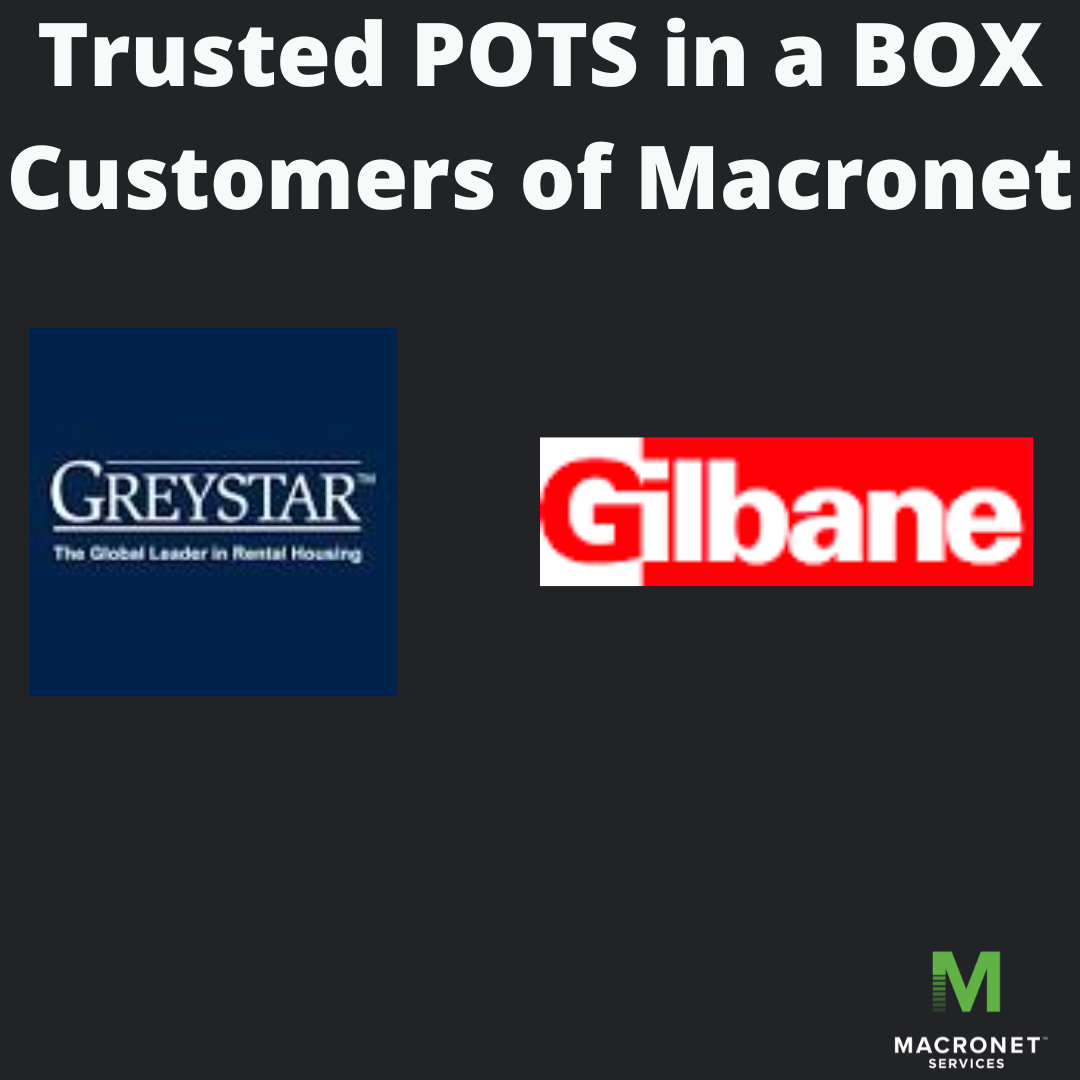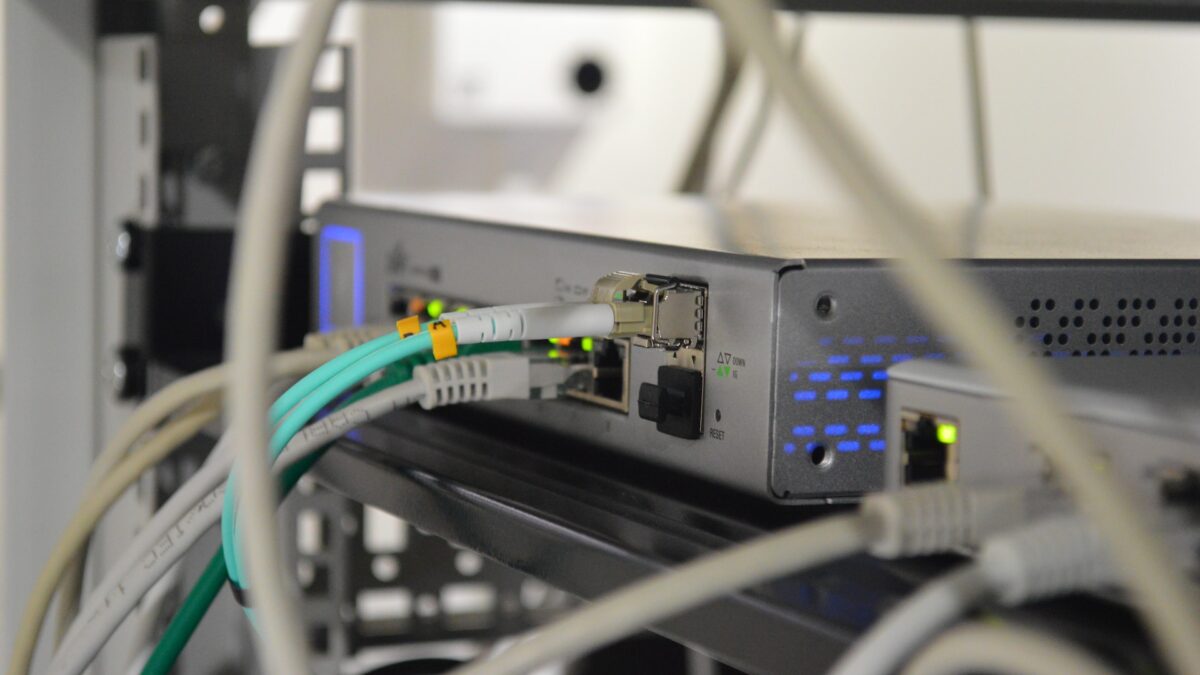Analog POTs Replacement: How It Works and What You Need to Know
In the era of advancing technology, the analog Plain Old Telephone Service (POTs) is gradually being replaced with more modern alternatives. Why? Carriers cost to support traditional analog services is not strategic or an area they want to focus resources. This shift brings about various changes and considerations that users should be aware of.
There are simply two use cases for POTS replacement, the first is new construction buildings and the second is “swapping” existing analog POTS lines with non-copper facilities. Understanding how the replacement process works and familiarizing oneself with the key aspects is crucial to seamlessly transition from traditional analog POTs to the new digital solutions. This article delves into the intricacies of analog POTs replacement, providing insights into the underlying mechanisms, highlighting the benefits of the transition, and offering essential information to help individuals navigate this technological evolution effectively.
Introduction & What are Analog POTs
As technology continues to advance, many old technologies are being phased out in favor of newer, more efficient options. One such technology that is slowly being replaced is the analog POTS.
POTS lines are coppers services using analog signaling to transmit from one end to another, far or short distances delivering a telephone call. Many features people grew up with include Caller ID, Call Waiting and 911 services are all staples transferred to the new POTS replacement services.
What POTS lines are impacted by Replacement?
- Fire Alarms
- Elevators
- 911 services including Call Boxes
- POS (Point of Sale Systems)
- ATMs
- Gate Access
- Fax lines
- Business Resiliency and BCDR (redundancy for other voice transport)
- SCADA systems
- Out of Band Systems Management – this includes WAN and other troubleshooting services.
Why are Analog POTs Being Replaced?
Analog POTs have been around for a long time and are relatively inexpensive. However, they have several disadvantages that have led to their replacement. First, they are mechanical devices that wear out over time, leading to noise and poor performance. Second, they are relatively large compared to newer electronic components, making them difficult to use in modern compact designs. Finally, they have a limited range of resistance values, making them unsuitable for certain applications. The replacement of analog POTs with digital alternatives is driven by the need for improved reliability, precision, and versatility in electronic systems. Digital potentiometers offer solid-state construction, resulting in longer lifespan and reduced susceptibility to mechanical failures. Additionally, their compact size and wide range of programmable resistance values make them more adaptable to the evolving demands of modern electronics.
“Analog POTs replacement is a transformative solution for enhancing business communication in the digital age,” explains Gary Sloper, Co-Founder at Macronet Services. “By transitioning from traditional analog Plain Old Telephone Service (POTs) to modern digital systems, businesses can unlock a myriad of benefits. The replacement process involves migrating to Voice over Internet Protocol (VoIP) or cloud-based telephony, enabling seamless integration of voice, data, and multimedia services. This shift not only enhances flexibility and scalability but also delivers cost savings by eliminating the need for multiple phone lines and hardware maintenance. Moreover, it opens up new avenues for advanced features like virtual extensions, auto-attendants, and call forwarding, empowering businesses to streamline their operations, improve customer service, and stay ahead in the highly competitive market.”
New Construction POTS services
If you have a new building coming on line soon, you might be stuck in the order queue for an Analog POTS line or multiple lines from the carrier. This holds true for any life safety lines to support elevator, alarm or environmental remote services which must “call” home in some fashion. There is not much revenue for carriers to lay out hard costs to install legacy copper into a newly constructed building. This is where General Contractors, REITS and Property Groups mis-calculate and realize days before the Fire Marshall arrives to inspect prior to occupancy. Leaving it in the hands of the carrier is a risking undertaking if you are requesting POTS lines via analog services. There are less technicians trained in delivering a punch down block from the telephone pole into a new building.

Existing building & POTS replacement
Organization who have existing buildings looking to lower the expensive Monthly Residual Cost (MRC) of their telephone line are in for a treat. If they were told they could simply replace the underlying carrier and physical medium while saving 70%-80% in monthly costs, they might fall out of their chair. Retail, Hospitals/Healthcare, Financial Services are just a few organizations who are acting now.
POTS Replacement for Retail
Sloper describes this as the POTS Retail Advantage, noting thousands of lines sit in legacy floor space, shared MDFs in malls and other remote building nodes. POTS replacement for retail organizations is the fastest growing OPEX saving savior enabling teams to cut costs while improving functionality all within a 14 day to 45 day window.
“One retailer was spending approximately $40,000 per month pre-tax on POTS lines across their stores. We were able to replace and port the numbers off the Analog lines saving almost $400,000 per year or $1,200,000 million forecasted over 36 months. However, they now have redundancy, monitoring and more built into the replaced solution for a fraction of the cost. They now re-invest in other areas of the business purely on OPEX savings,” described Sloper.
Recent Posts
- Which TEM Provides the Best Service? Telecom Expense Management Support Report
- The Smart Way to Design a Global Network For Your Business—15 Easy Steps
- What is a Wayleave and How Can it Impact Your Circuit Installation Timelines?
- What are the Keys to a SASE Network Design?
- What is a Cloud Center of Excellence (CCOE) in a FinOps practice?
Archives
- April 2024
- March 2024
- February 2024
- January 2024
- December 2023
- November 2023
- October 2023
- September 2023
- August 2023
- July 2023
- June 2023
- May 2023
- April 2023
- March 2023
- February 2023
- January 2023
- December 2022
- November 2022
- October 2022
- September 2022
- August 2022
- July 2022
- June 2022
- May 2022
- April 2022
- March 2022
- February 2022
- January 2022
- December 2021
- November 2021
- October 2021
- September 2021
- August 2021
- July 2021
- June 2021
- May 2021
- April 2021
- March 2021
- December 2020
- September 2020
- August 2020
- July 2020
- June 2020
Categories
- Uncategorized (1)
- Security Services (62)
- Cloud SaaS (45)
- Wide Area Network (278)
- Unified Communications (181)
- Client story (1)
- Inspiration (3)
- Tips & tricks (20)
- All (4)
- Clients (10)
- Design (3)
- News (240)
- Music (1)





